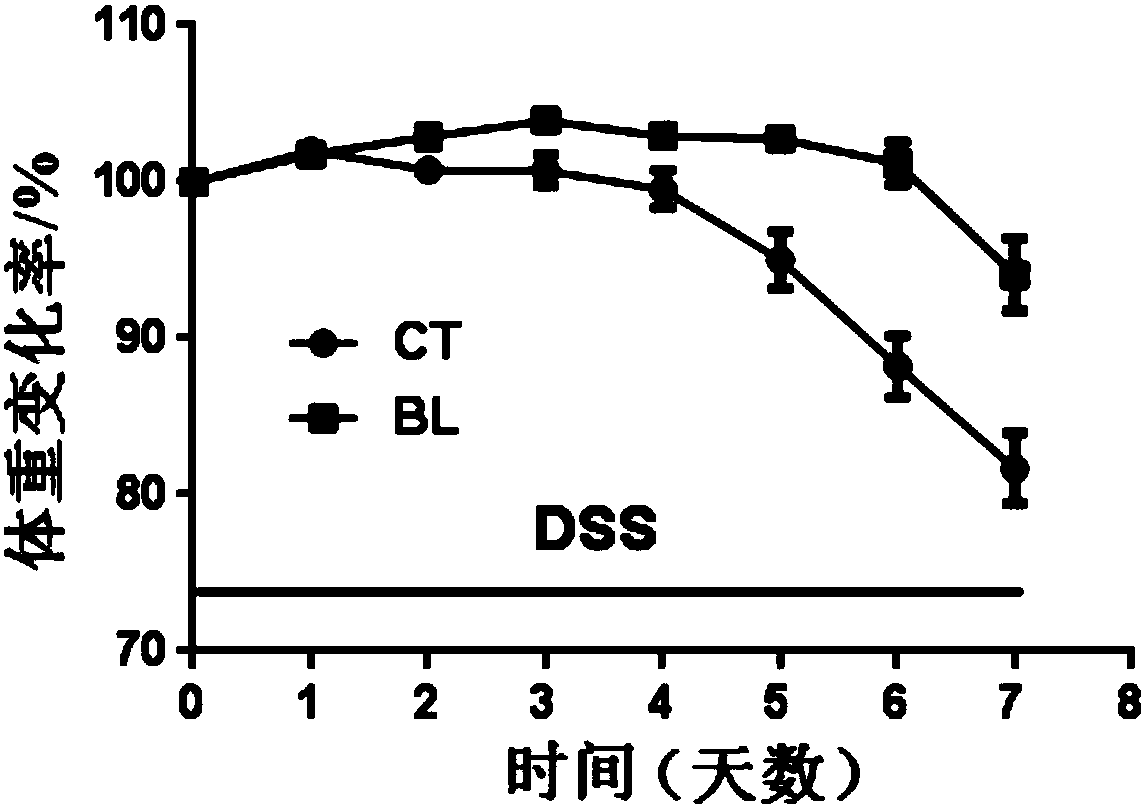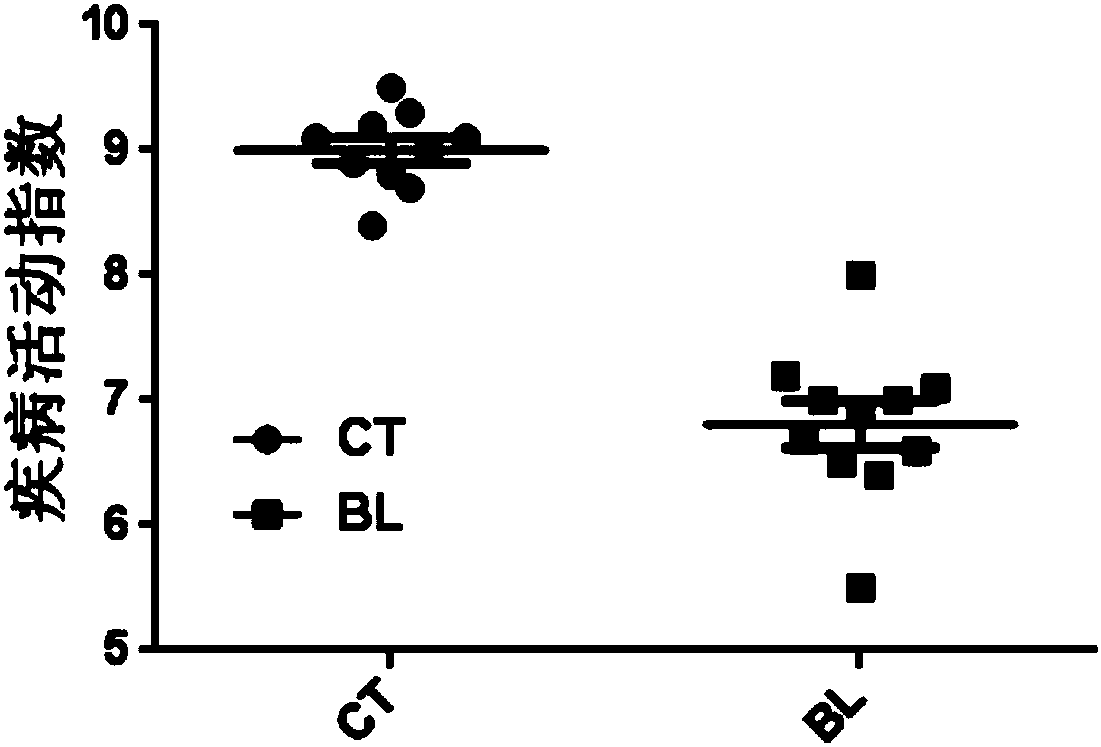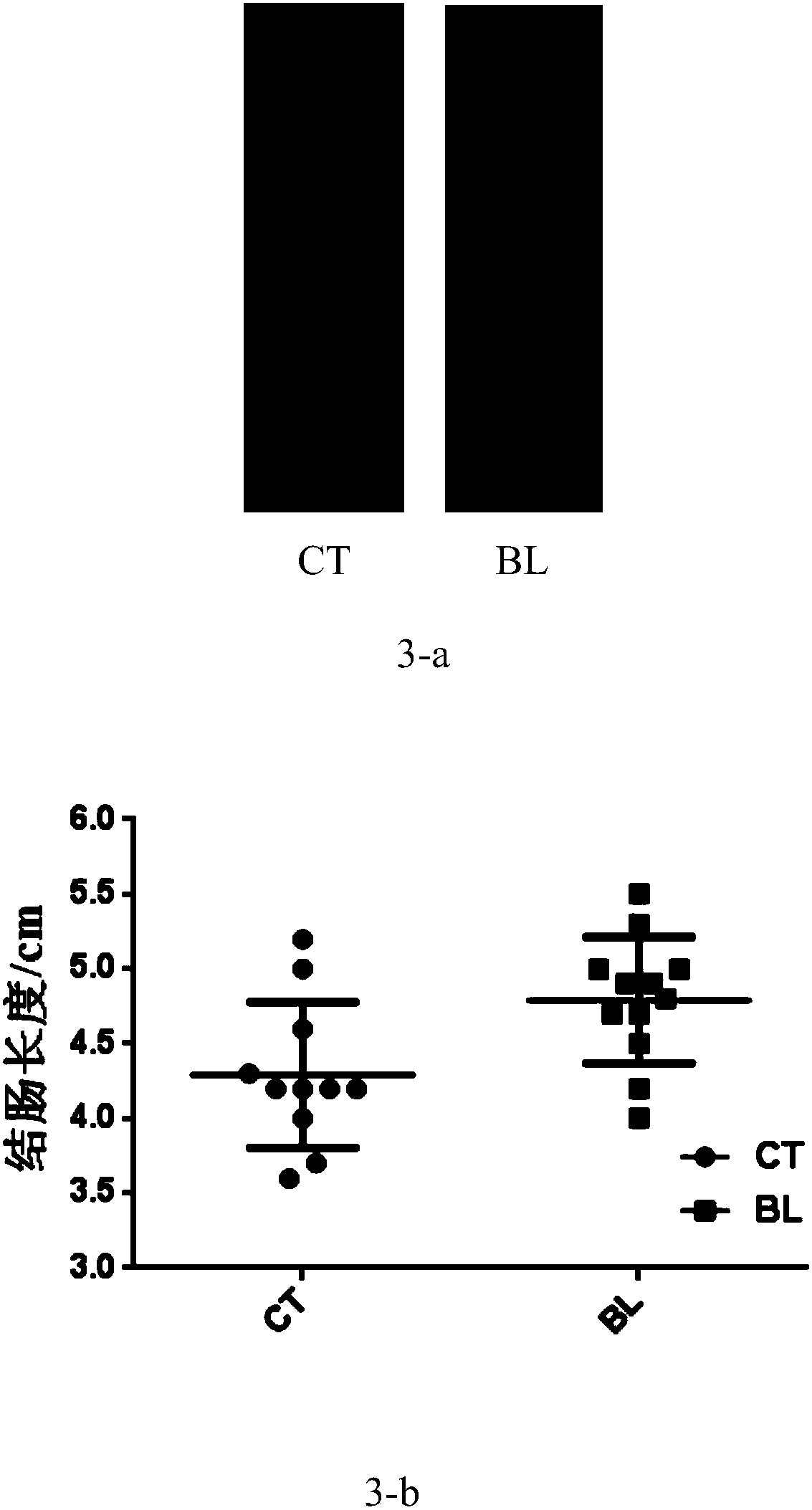New application of barley leaves
A barley leaf and drug technology, applied in the new use field of barley leaf, can solve the problems of difficult to control the epidemic trend of inflammatory bowel disease and the safety defect of drug therapy, so as to improve the intestinal microenvironment and improve the intestinal barrier function. , the effect of inhibiting weight loss
- Summary
- Abstract
- Description
- Claims
- Application Information
AI Technical Summary
Problems solved by technology
Method used
Image
Examples
Embodiment 1
[0030] Example 1: Barley leaves can improve inflammatory bowel disease in mice
[0031] Taking dextran sodium sulfate (DSS)-induced colitis in mice as a research model, the model is established as follows:
[0032] 5-week-old healthy female C57BL / 6J mice were selected and raised in a standard 12-hour day-night cycle, constant temperature at 22°C, and a specific pathogen-free (SPF) environment. After one week of adaptive feeding, the mice were randomly divided into a control group (CT, 12 mice) and a barley leaf group (BL, 12 mice). The mice in the control group were fed normal mouse diet (Research diet, D12450B). The mice in the barley leaf group were fed with normal mouse diet supplemented with 2.5% barley leaf by mass. Each mouse was fed with 0.3g feed per day, and after 3 weeks of continuous feeding, DSS was added to the drinking water of the two groups of mice at a ratio of 2.5% mass fraction, and the mice were allowed to drink water freely for 7 days to induce colitis. ...
Embodiment 2
[0038] Example 2: Barley leaves can improve the intestinal microenvironment of mice induced by DSS
[0039] Using the DSS-induced colitis in mice in Example 1 as a research model, the effect of barley leaves on the structure of the intestinal microbial flora was explored.
[0040] There are a large number of microbial populations living in the intestinal tract of animals. The number of microorganisms in the intestinal tract of adults is as high as 1014, which is 10 times the number of human somatic cells, and the number of genomes is about 100 times that of the human genome. As the largest and most complex microecosystem in animals, gut microbes play important physiological functions, such as metabolizing and degrading dietary nutrients, preventing pathogen invasion, and maintaining the homeostasis of the intestinal microenvironment. Studies have shown that gut microbes play an important regulatory role in the occurrence and development of inflammatory bowel disease. The imba...
Embodiment 3
[0046] Example 3: Barley leaves can promote the proliferation of intestinal epithelial cells in healthy mice
[0047] 5-week-old healthy female C57BL / 6J mice were selected and raised in a standard 12-hour day-night cycle and a constant temperature of 22°C in a specific pathogen-free (SPF) environment. After 1 week of adaptive feeding, the mice were randomly divided into a control group (CT′, 12 mice) and a barley leaf group (BL′, 12 mice). The mice in the control group were fed normal mouse diet (Research diet, D12450B ), and the mice in the barley leaf group were fed with normal mouse diet supplemented with 2.5% barley leaf by mass.
[0048] Each mouse was fed with 0.3g feed every day, and after continuous feeding for 3 weeks, the mice were dissected, and the colon tissue samples were preserved with 4% formalin fixative, and stained with hematoxylin & eosin (H&E) To detect the morphological changes of mouse colonic epithelial cells, specifically as Figure 7 as shown, Fig...
PUM
 Login to View More
Login to View More Abstract
Description
Claims
Application Information
 Login to View More
Login to View More - R&D
- Intellectual Property
- Life Sciences
- Materials
- Tech Scout
- Unparalleled Data Quality
- Higher Quality Content
- 60% Fewer Hallucinations
Browse by: Latest US Patents, China's latest patents, Technical Efficacy Thesaurus, Application Domain, Technology Topic, Popular Technical Reports.
© 2025 PatSnap. All rights reserved.Legal|Privacy policy|Modern Slavery Act Transparency Statement|Sitemap|About US| Contact US: help@patsnap.com



